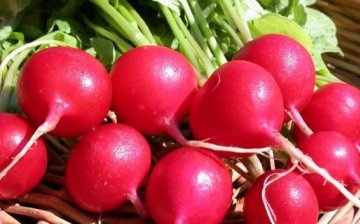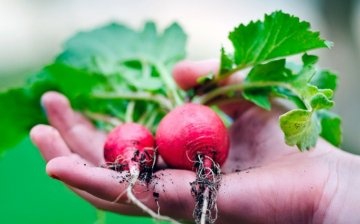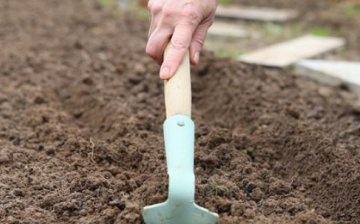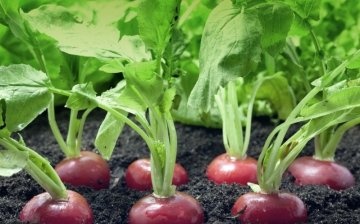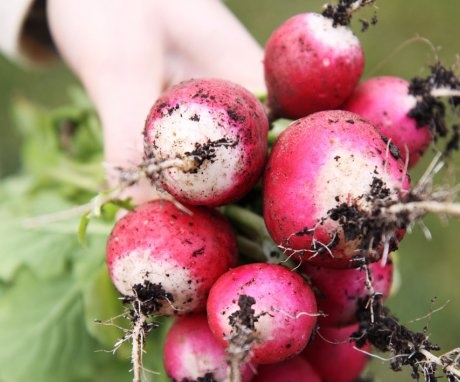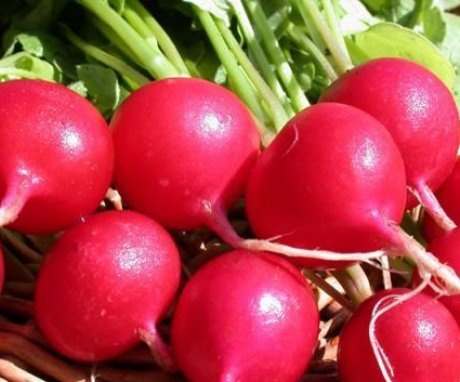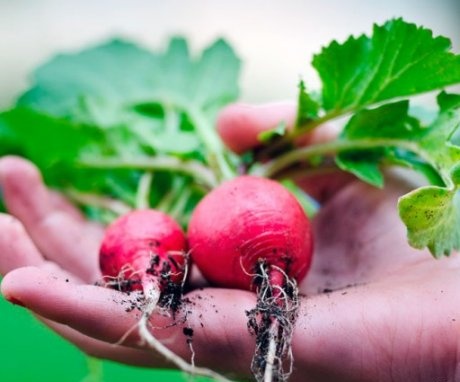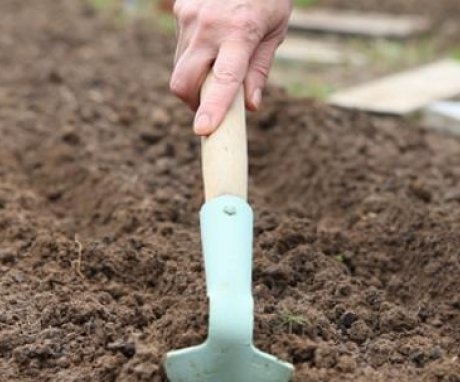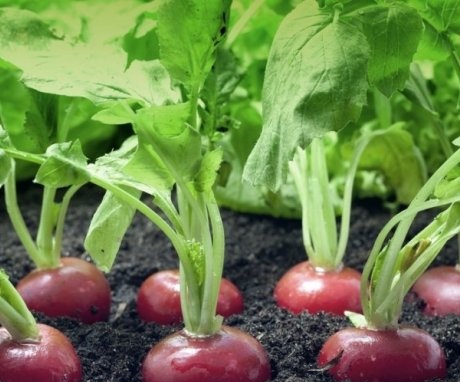The most productive early-maturing, mid-maturing and late-maturing radish varieties
Any gardener knows that the very first vegetable to ripen in the garden is a radish. Its bright red and tasty fruits are pleasing to the eye and allow you to prepare salads in May-June. Radish planted one of the first, it grows quickly and bears fruit early. Vegetable growers hungry for vitamins begin to buy radish seeds from February.
Planting of a juicy vegetable begins in early spring. The plant only needs 20 days to mature, it quickly reaches its presentation, and can be traded from May, depending on the planting date. However, many growers grow radishes for their own menus throughout the summer, not just in the spring. In order to have a harvest of radish throughout the season, you should know its varieties and planting rules. There are also some nuances in growing. Tips for the grower will help you decide on the variety, type and method of growing delicious radishes.
Content
- Early maturing radish varieties
- Mid-season varieties
- Late-ripening radish varieties
- Landing - nuances and features
- Radish care
Early maturing radish varieties
Early ripening varieties differ, first of all, in terms of ripening. The plant needs 16-25 days to completely fill the root crops. These varieties are usually planted in March-April, depending on the region of the country. In the North, the term landing always delayed by about a month. If the region is cold and the ground has not yet moved away from the ice, radish planted in greenhouses. It is customary to plant a vegetable in early spring for a reason, it does not like long light days, which is typical for the summer months.
The ideal daylight hours for radishes is 10 hours, less often 12 hours.
Always consider this nuance when trying to grow a vegetable in the summer. The most popular and proven early maturing varieties are:
- "18 days" is one of the most famous varieties of radish. The fruits ripen on the 18th day (from the first shoots). The fruits of the vegetables resemble a cylinder, the tips of the fruits are white, and the radish itself has a pale red hue. The fruit is tasty, not spicy or bitter. The pulp is tender.
- The French Breakfast is a great variety for those who can't wait to taste the juicy radish fruit. The vegetable ripens on day 20. The taste is juicy, tender, without bitterness. Many growers grow this variety throughout the summer. The fruit holds its shape for a long time and does not flabbiness.
- "Champion" - will delight you with large, scarlet fruits. High-yielding variety. The taste is excellent. Ripens on day 24. The shape of the radish is round. The pulp is tender, tasty, juicy, without bitterness.
- "Early Red" - the variety has long been very popular among vegetable growers. Fruits ripen on day 24, suitable for growing throughout the summer. The fruits are round, bright red, juicy and tender.
- "Heat" is a high-yielding variety. Feels great outdoors, the fruits are bright red, tasty, without bitterness. Ripens on day 22 (from the first shoots). This variety is often planted for the purpose of harvesting for sale.
- "Zlata" - the variety is interesting in that it produces yellow roots and has excellent taste. Ripens on day 24. Grown both outdoors and indoors. The variety is suitable for growing vegetables throughout the summer.
Early ripening varieties ripen quickly, therefore, to grow a vegetable throughout the summer, it is necessary to constantly plant radishes. Experienced vegetable growers are advised to purchase varieties where the arrow either does not eject at all, or the plant blooms very rarely. This feature allows you to harvest the entire season. However, the rules of daylight hours must be observed. In June and July, shade the radish garden to create an artificial sunset.
If there is no time for shading the radish during the summer, not only early-ripening, but also mid-season radish varieties are planted in the spring. The combination of varieties of different ripening periods will allow the grower to harvest, almost the entire season.
Mid-season varieties
Mid-season varieties ripen longer, the fruits are poured in 30-35 days. These varieties differ from early ripening ones not only by the ripening period, but also by the size yield... Mid-season types of radish give a bountiful harvest, later give an arrow, and the fruits are stored longer and not flabby. They are planted in the spring, as well as early ripe radishes.
Usually, growers plant both types of vegetables in the same garden in order to harvest for several months.
The mid-ripening category of radish, as a rule, includes varieties intended for open ground. They tolerate frost and temperature extremes well. Hybrids are resistant to diseases and parasites.
The most popular varieties in this category are:
- "Ilka" - the variety is distinguished by abundant productivity. Designed to grow throughout the summer. Vegetable growers love the Ilka variety for its ability not to throw out the arrows in the summer, this allows you to harvest the whole season. The fruits are tasty, juicy and slightly pungent. Ripens on day 30.
- "Saksa" - the variety can be grown both in spring and summer, does not give arrows. The fruits are large, juicy and tender, without bitterness and pungency. The color is bright red. The root crop ripens on day 30.
- "Duro" is an excellent variety for cultivation from May to October. In summer, it practically does not throw out arrows. The fruits are large, juicy and tender, without bitterness. Ripens on day 30. Vegetable growers do not know any problems with this variety, it is resistant to diseases and parasites. This is a great option for growing radishes all season. High productivity.
- "Dungan" - large fruits, juicy and tasty. Do not taste bitter. The shape of the fruit is round, ripens in 35-40 days, depending on the region.
- "Red Giant" is a high-yielding variety. The shape of the fruit is similar to a cylinder and reaches a length of about 20 cm. The fruits are tasty, tender and juicy. Ripen on day 35. The variety is resistant to diseases and pests. In cold regions, the ripening period is up to 50 days.
Mid-season varieties are best planted together with early-maturing types of vegetables. So the gardener will always have a fresh bunch of tender radish at the table. If you want to pamper yourself with a vegetable until late autumn, you need to plant late-ripening radish varieties.
Late-ripening radish varieties
These varieties of radish ripen only 35-50 days. This type of radish is distinguished by abundant productivity, flowering occurs very rarely or is completely absent. Feels great in summer with long daylight hours. Late-ripening varieties are planted in late May or June, depending on the region.
Fruits appear in the second half of summer or early autumn.
Vegetable growers usually add late-ripening varieties to early-ripening and mid-ripening ones. So the gardener provides himself with radishes for the whole season. The following widespread varieties are distinguished:
- "Ice Icicle" is an interesting variety that all vegetable growers love. The fruit of the vegetable resembles an icicle in shape and is white. Large, juicy and very tasty. The variety is distinguished by the abundance of the harvest. Ripens in 40-50 days.
- "Autumn giant" - the fruits of this type of radish are white, elongated. The taste is juicy, tasty, slightly spicy and tender. The root crop is large, stored for a long time - up to a month, it will not flabby.
- "White Fang" - the fruits ripen on the 40th day. High-yielding. The taste of the vegetable is excellent. The fruits are conical in shape.
The first two varieties are considered the most successful, they perfectly tolerate long daylight hours, do not give arrows and bear fruit well. Their fruits are stored for a long time and are not flabby. Having decided on the variety radish, you should familiarize yourself with some of the nuances of planting and caring for a vegetable. Knowing the peculiarities of growing radish will allow you to grow a rich and tasty harvest.
Landing - nuances and features
Experienced vegetable growers already know that it is best to plant radishes in early spring, despite the fact that many sources indicate subwinter sowing... The explanation is very simple. If you plant a radish before winter, the vegetable will ripen longer than when planted in early spring. Although, it would seem, planting before winter should accelerate the ripening process in spring. For this reason, most vegetable growers plant their favorite radish in spring - March, April, depending on the region.
You can navigate by warming up the soil. It should thaw 3 cm deep. Another nuance is the soil itself - do not choose a site for planting radishes after growth radish... The soil should not be oversaturated with fresh organic matter (manure). Only well-rotted humus and complex mineral fertilizers.
Distance between seeds is about 5-6 cm. Between rows - 10 cm.
The seed is immersed in the ground 1-2 cm deep, depending on the severity of the soil. Before planting the seeds, soak them in a weak solution of potassium permanganate. So diseases will not appear on the plant. Sprinkle the beds periodically with charcoal and tobacco dust - this will prevent the appearance of pests and diseases... All these simple features will help you grow a bountiful harvest of radishes. Also try to choose a spot that is light enough for the vegetable.
Radish care
Care radish not much different from caring for all other vegetable crops:
- It must be watered, weeded and loosened in a timely manner.
- Overgrown radish will very quickly pick up some pest or illness from weed... Therefore, keep the beds clean.
- Pick up ripe fruits in time.
- Radish loves moist soil. If the region is characterized by dry weather, the crop should be watered every day. If the climate is temperate, water the garden about 3-4 times a week. It is important not to overflow the vegetable, otherwise slugs may appear.
- Make sure that the garden is naturally ventilated.
- From frequent watering, very often the top layer of the soil turns into a crust, air does not enter the root crop when it ripens, which is necessary for normal growth. Therefore, make sure that the soil is loose and permeable to oxygen.
- It is necessary to loosen the soil carefully, so as not to bare the growing fruits at all. You can use a regular wooden stick instead of a small rake.
All these simple tips and rules are very easy to follow. Radish is not a capricious crop, it is easy to grow. Having planted three types of radish in the garden - early ripening, mid - and late ripening - the vegetable grower will be able to harvest throughout the season. Juicy and bright fruits will delight in spring and summer.
More information can be found in the video.





